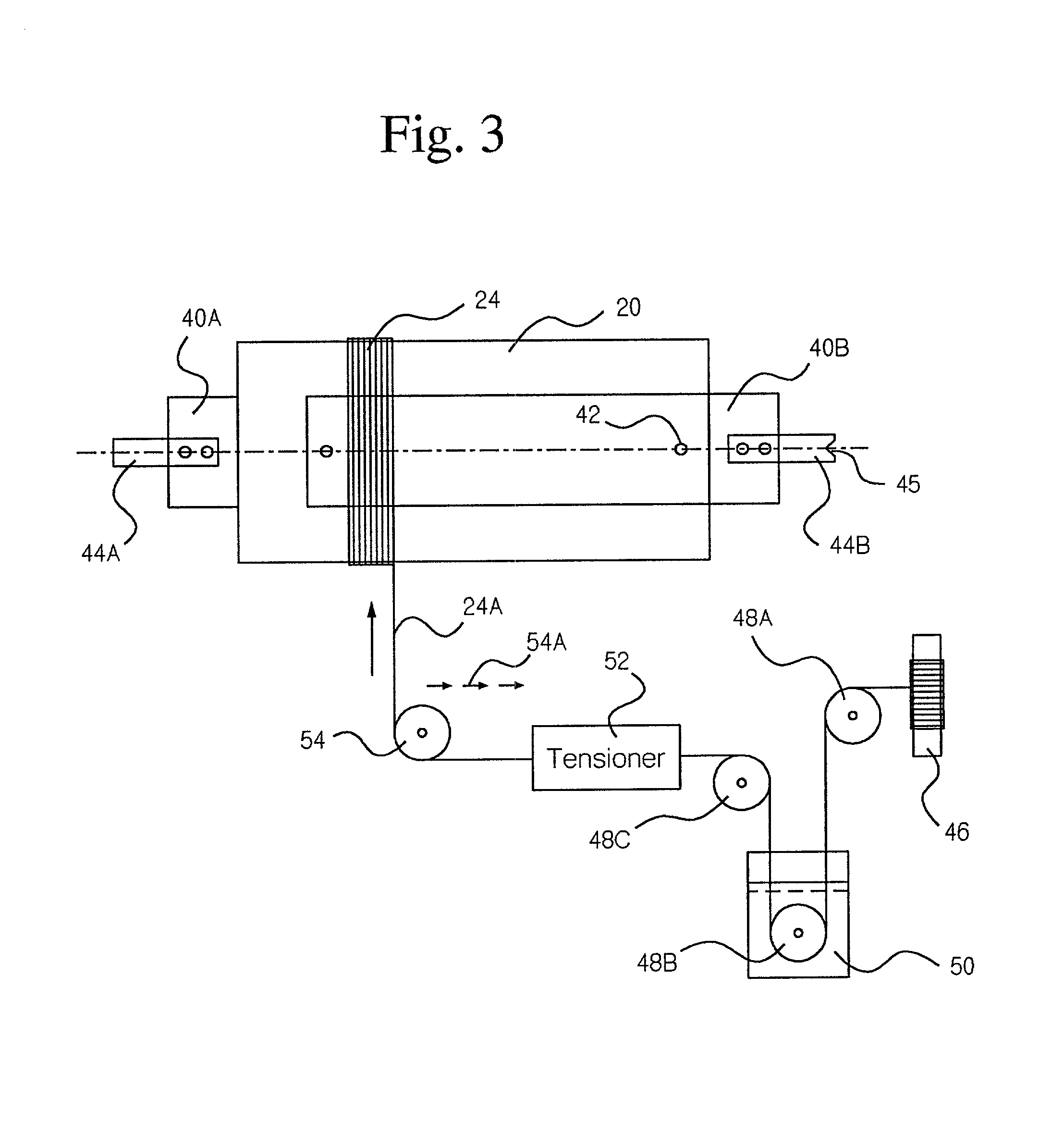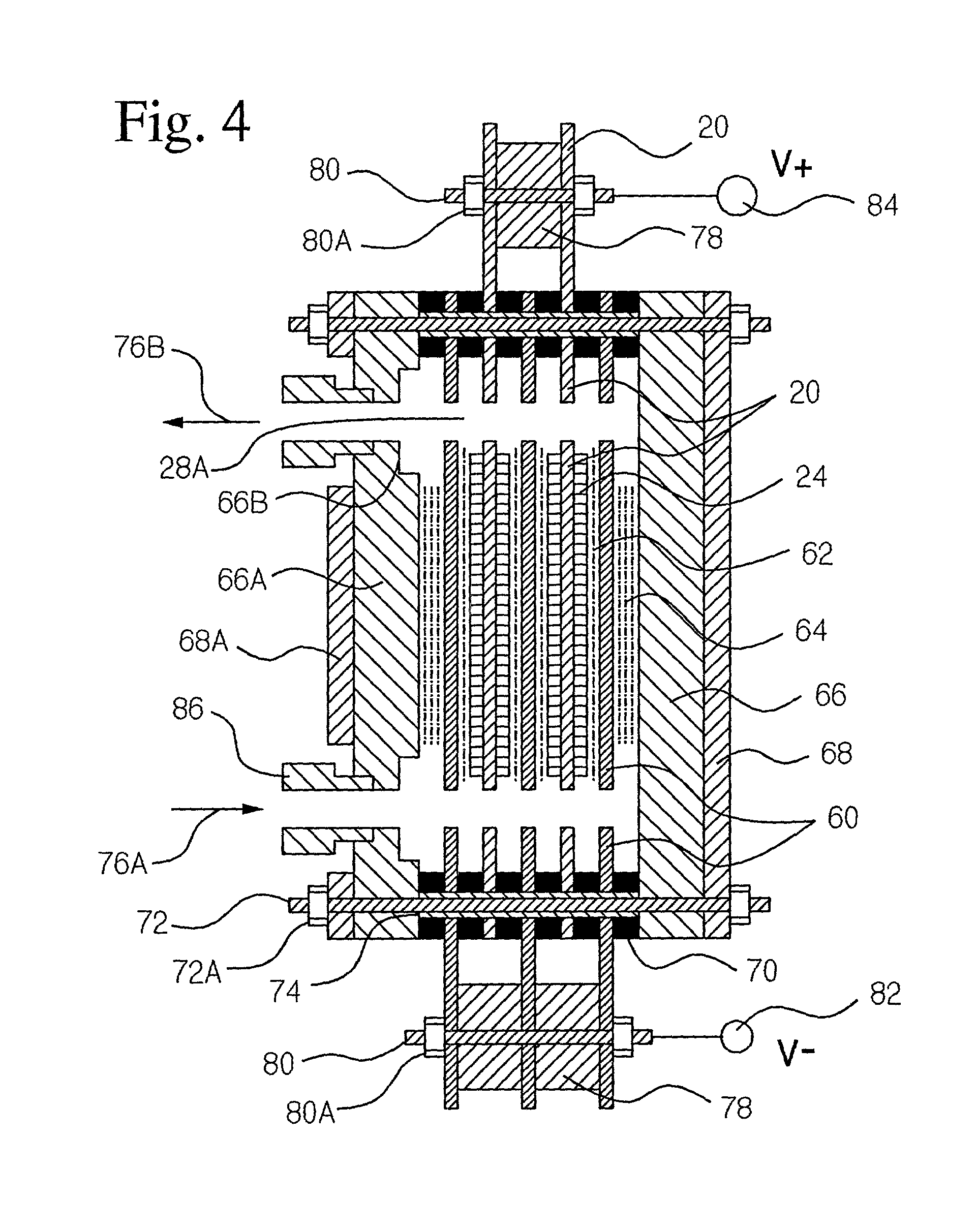Electrode and electrochemical cell for water purification
a technology of electrochemical cells and electrochemical cells, which is applied in the direction of electrochemical electrodes, manufacturing tools, electrical-based machining electrodes, etc., can solve the problems of poor current yield, fiber electrodes subjected to high temperature annealing, and poor endurance of electrodes so produced
- Summary
- Abstract
- Description
- Claims
- Application Information
AI Technical Summary
Problems solved by technology
Method used
Image
Examples
Embodiment Construction
[0051] In the preferred embodiment, electrode plate 20 is nominally pure titanium (Ti-Gr.1 or Ti-Gr.2) 0.02inches (0.5mm) thick, and measures 8.times.18 inches (203.times.457 mm). Cathode 60 is made of a corrosion resistant alloy selected for the application; for example, 316 stainless steel (approximately Fe--17Cr--12Ni--2.5Mo--0.08C--1Si--2Mn), Ni--2.5Co--15.5Cr--16Mo--3.8W--5.5Fe (Hastelloy C--276) or Ni--2.5Co--22Cr--13Mo--3W--3Fe (Hastelloy C--22). Hastelloy cathodes are preferred if chloride is present in the electrolyte. Cathode 60 is approximately 0.025 inches (0.64mm) thick. The hardware used to assemble the cell (threaded rods, bolts, nuts, threaded inserts, etc.) is stainless steel.
[0052] The outer walls and side walls of the cell are made of 0.5 inch (12.7mm) polypropylene. The backing plates are 0.25inch (6.35mm) aluminum plate.
[0053] Ti-fiber and Winding Procedure.
[0054] In the preferred embodiment of the invention, the titanium fiber is a 200 ...
PUM
| Property | Measurement | Unit |
|---|---|---|
| Composition | aaaaa | aaaaa |
| Concentration | aaaaa | aaaaa |
| Adhesion strength | aaaaa | aaaaa |
Abstract
Description
Claims
Application Information
 Login to View More
Login to View More - R&D
- Intellectual Property
- Life Sciences
- Materials
- Tech Scout
- Unparalleled Data Quality
- Higher Quality Content
- 60% Fewer Hallucinations
Browse by: Latest US Patents, China's latest patents, Technical Efficacy Thesaurus, Application Domain, Technology Topic, Popular Technical Reports.
© 2025 PatSnap. All rights reserved.Legal|Privacy policy|Modern Slavery Act Transparency Statement|Sitemap|About US| Contact US: help@patsnap.com



